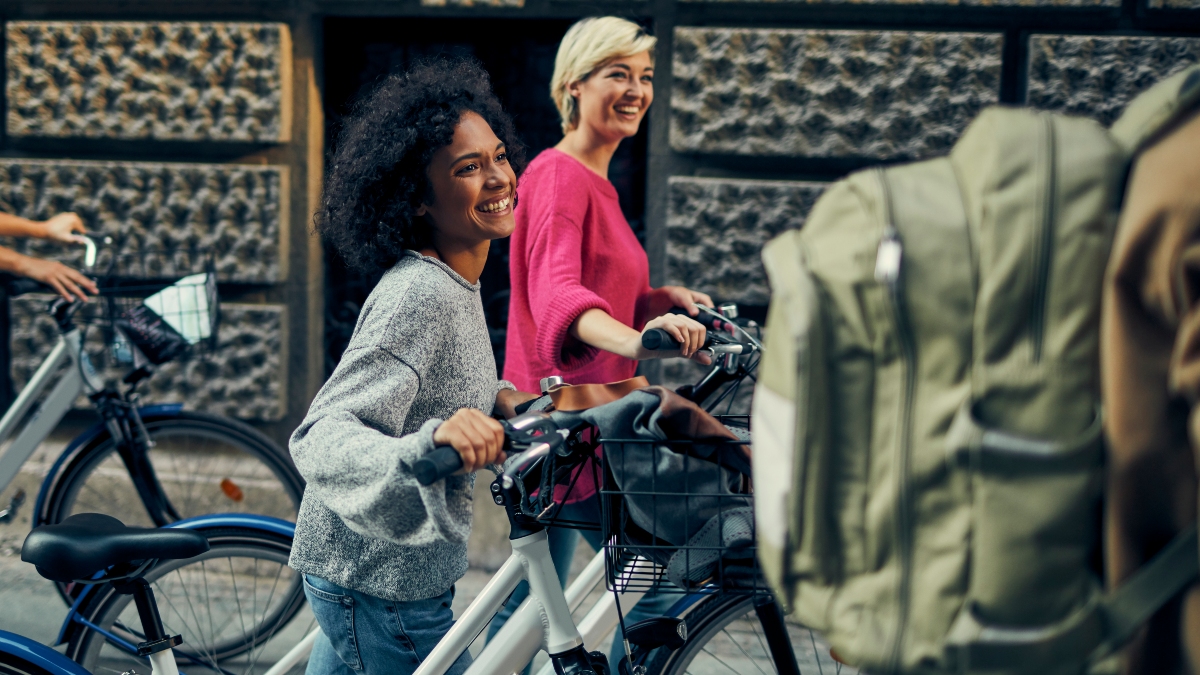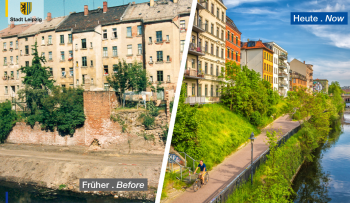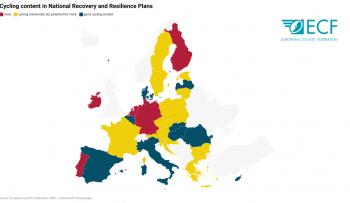
Urban Mobility Framework: How European countries can boost cycling in their cities
ECF showcases how national cycling strategies, suitable infrastructure and financial incentives can help countries best implement the EU Urban Mobility Framework policy and increase cycling levels in their cities.
Many European cities are global frontrunners on mobility and transport. A smaller number of cities excel at providing their citizens with cycling infrastructure, but this is one area in which most European cities still need to improve. At ECF, we believe this can be done with a sound implementation of the EU Urban Mobility Framework, released by the European Commission one year ago.
The Urban Mobility Framework (UMF) is an EU policy meant to guide cities to have more sustainable and climate-friendly transportation and mobility, setting more rigorous guidelines. For example, it states that “a clear priority should be placed at national and local level on the development of public transport, walking and cycling, as well as connected and shared mobility service.”
As EU countries dedicate funding and resources to implementing the UMF in their cities, ECF recommends three things they can do to boost cycling: develop good national cycling strategies; build safe, attractive and practical cycling infrastructure; offer citizens financial incentives to cycle more often.
Starting with a national cycling strategy
As with anything, effective actions are usually based on good plans.
ECF recommends eight ingredients for success that every public authority should follow to ensure they develop a good cycling strategy.
- Bold political leadership: Ideally, the level of political support for a strategy must come from the ministerial level, the government and the parliament, with cross-party endorsement. A good example is French Prime Minister Elisabeth Borne, who has publicly endorsed the country’s Plan Vélo 2022, affirming that the bicycle will play a key role in society.
- Ensure inter-departmental coordination: France, Germany, Austria and Czechia are among a small group of countries that have national cycling focal points. A person allocated to a position like this can ensure that a multi-faceted cycling strategy is well coordinated within the public administration.
- Get good stakeholder engagement: Consultations and cooperation with local and regional authorities, civil society, businesses, academia, public services are necessary. It may slow down decision-making, but it makes buy-in and implementation easier. The Netherlands has a good example with their “Tour de Force” initiative.
- Set SMART targets: Strategies must set targets that are specific, measurable, achievable, realistic and time bound. For example, a strategy should set a goal to increase the number of bicycle trips, or cycling’s share in the modal split, by a certain number or percentage; to build a specific number of kilometres of cycling infrastructure by a certain year. Targets should be ambitious but achievable.
- Base it on a sound cost-benefit analysis and invest: Cycling is a low-cost transport mode, but it still requires sustained financial investment. The Netherlands, for example, has on average invested €35 per capita in cycling annually over many years. These investments bear great fruits and benefits for society. Countries should foresee making investments of €30 per capita annually on cycling, sustained over many years, and should integrate cycling in other infrastructure investments.
- Adopt a law: Cycling strategies are vulnerable to changes in government. Therefore, it is important to codify the strategy into law. Good examples include the Welsh Active Travel Act of 2013, requiring local authorities to map walking and cycling infrastructure and to set aside investments for it. Luxembourg is required to build a national cycle network in its Legal Act of 2019. This is also needed to ensure cycling is on a level playing field with other modes of transport. Some good examples of countries that have done this are Poland and Italy.
- Ensure sufficient capacity to plan: Public authorities must be educated and equipped to plan, decide on and build cycling infrastructure. There are bicycle knowledge centres in Flanders, Germany and Netherlands that do just this.
- Monitor and evaluate the plan: A good cycling strategy should not sit on a dusty bookshelf. Good data must be collected to know if it is making a difference. This can include survey data, census counts, data from on-street bicycle counters.

Analysis of EU national cycling strategies (Source: The state of national cycling strategies in Europe – 2nd edition (2022), ECF)
Building safe, attractive and practical cycling infrastructure
57% of all cyclist deaths occur on urban roads in the EU. Cycling needs to be made safer for users in several urban environments, and this happens when governments invest in and build good infrastructure.
There are a variety of kinds of cycling infrastructure that governments can implement to make cycling safer while also keeping it attractive and practical for users:
- Cycle tracks – separated cycle lanes that keep cyclists away from automobiles, ideal on roads with higher speeds and volumes of cars.
- Cycle lanes – painted lanes on the roads that provide a space for cyclists but mixed with car traffic and providing limited or no protection.
- Contraflow cycling – permits cyclists to travel in the opposite direction of car traffic. Easy and affordable to implement, this can provide cyclists with alternatives to more dangerous arterial roads and options for shorter routes.
- Modal filters – natural or artificial barriers that block cars from a street but allow pedestrians or cyclists to come through.
- Cycle streets – streets where car drivers are the “guests” and cyclists the primary road user, meaning they can take their space on the road with drivers unable to pass.
Good cycling infrastructure should be safe, providing cyclists with enough protection based on the volumes and speeds of cars on a particular road. It should also be coherent and direct, taking people to where they want to go, and built with pleasing design aesthetics that make it comfortable and attractive for people to use. There is no shortage of good infrastructure design manuals and guidance that can aid any city authority. The Urban Cycling Institute is one such resource, as is our geometric design parameters.
Offering citizens financial incentives to cycle
More EU countries are providing their citizens with money to cycle. This began during the last decade and accelerated with the cycling boom during the pandemic.
There are a variety of ways governments can do this:
- Tax cuts for distance-based commuting – Belgium is a pioneer. Since 1999, employees are given a tax-free reimbursement for a bike commute to work at a rate of €0,25 per kilometre.
- Tax cuts for company bicycles – Belgium, Finland, France, Germany, Ireland and a few others do this. This incentive provides employees with access especially to e-bikes, which some people might find too expensive to purchase on their own.
- Car scrappage schemes – Lithuania, Finland and France have done this during the COVID pandemic. It provides support to people who want to shift from having two cars to one, or to shift completely away from a car lifestyle and to take up cycling as their primary mode of transport with an e-bike or e-cargo bike.
- Direct purchase incentives – Italy, Greece and Portugal introduced these in 2020. In France, e-bike sales doubled when the government introduced a purchase subsidy. Existing measures can be researched on ECF’s “Money for Bikes” online tracker.
- VAT reductions – Last year, EU countries agreed to reduce VAT rates for the supply, rental and repair of bikes and e-bikes. The losses in tax revenues are far outweighed by the benefits of having more people cycle, which is shown to happen especially when people use e-bikes. Portugal has since become the first country to implement this, inscribing an amendment to the 2023 state budget which will VAT rate on bicycle sales with the goal of increasing cycling modal share to 10% by 2030. Customers can now save hundreds of euros when purchasing bicycles.

ECF’s money for bikes tracker (Source: ecf.com)
Increasing cycling is a win for everyone
EU member states and cities will need to begin implementing the UMF. One of the ways to ensure that the UMF enables countries and cities to cut CO2 emissions, clean their air and achieve safer streets is to increase cycling.
This can be done by creating and implementing cycling strategies, planning and building cycling infrastructure that is safe, attractive and practical for users, and offer citizens direct financial incentives to cycle. Taking all three together, governments have a powerful way to radically increase cycling and enjoy the many co-benefits it can offer once it is truly unlocked for everyone.
Regions:
Contact the author
Recent news!
Upcoming events
Contact Us
Avenue des Arts, 7-8
Postal address: Rue de la Charité, 22
1210 Brussels, Belgium









